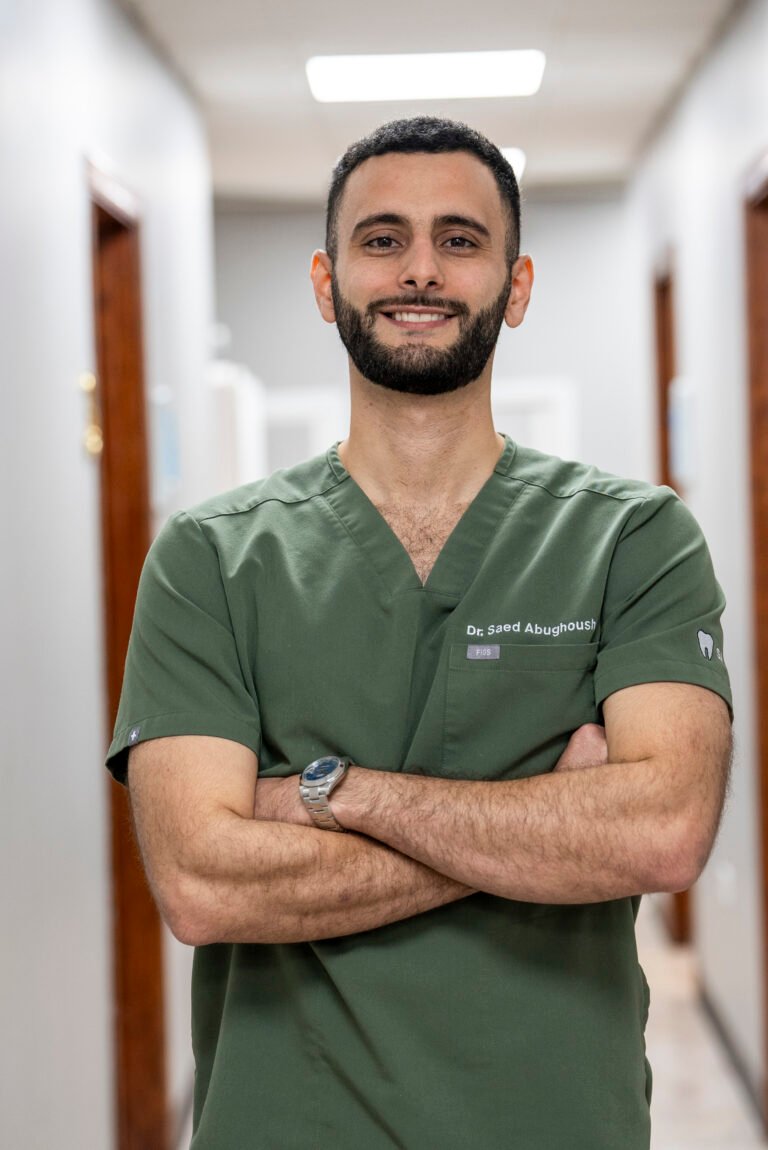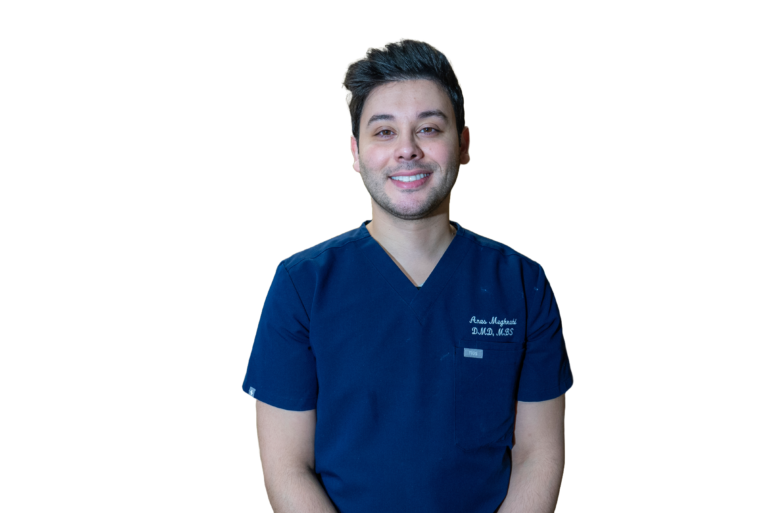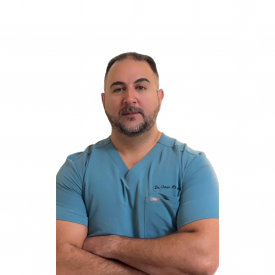Oral Surgery
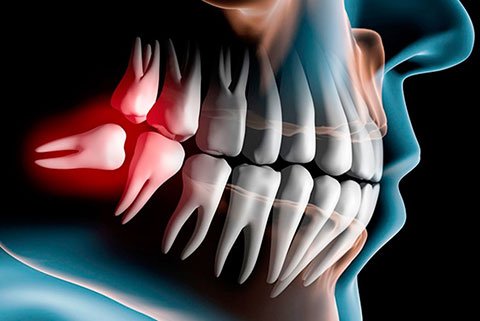
Wisdom Teeth
Wisdom teeth are the third molar sets that most people get in their late teens or early twenties. Sometimes these teeth can be a valuable asset to the mouth when healthy and properly aligned, but more often, they are misaligned and require removal.
There are several types of impaction based. Upon your visit, A special x-ray of your mouth and jaws (panorex) will be taken to determine if your wisdom teeth are impacted and to what extent effects you teeth, if there is room for them to erupt, and how difficult it will be to have them removed.
Soft Tissue Impaction :
There is not enough room to allow the gum tissue to retract for adequate cleaning of the tooth.
Partial Bony Impaction :
There is enough space to allow the wisdom tooth to partially erupt. However, the tooth cannot function properly in the chewing process, and creates cleaning problems, among others.
Complete Bony Impaction :
There is NO space for the tooth to erupt. It remains embedded in the jawbone or if even partially visible requires complex surgical techniques for removal. The impacted wisdom tooth may also be in an unusual position and difficult to remove. This situation can also arise when the shape or size of the jawbone and other facial structures make removal of this tooth significantly more complex.
TMJ
Disorders are a family of problems related to your complex jaw joint. If you have had symptoms like pain or a “clicking” sound, you’ll be glad to know that these problems are more easily diagnosed and treated than they were in the past. These symptoms occur when the joints of the jaw and the chewing muscles (muscles of mastication) do not work together correctly. TMJ stands for Temporomandibular Joint, which is the name for each joint (right and left) that connects your jaw to your skull. Since some types of TMJ problems can lead to more serious conditions, early detection and treatment are important.
No one treatment can resolve TMJ disorders completely and treatment takes time to become effective. Beverly Hills TMJ specialist, can help you have a healthier and more comfortable jaw.
TMJ disorders develop for many reasons. You might clench or grind your teeth, tightening your jaw muscles and stressing your TM joint. You may have a damaged jaw joint due to injury or disease. Injuries and arthritis can damage the joint directly or stretch or tear the muscle ligaments. As a result, the disk, which is made of cartilage and functions as the “cushion” of the jaw joint, can slip out of position. Whatever the cause, the results may include a misaligned bite, pain, clicking or grating noise when you open your mouth or trouble opening your mouth wide.
There are various treatment options that our Oral surgeon can utilize to improve the harmony and function of your jaw. Once an evaluation confirms a diagnosis of TMJ disorder, the Doctor will determine the proper course of treatment. It is important to note that treatment always works best with a team approach of self-care joined with professional care.
The initial goals are to relieve the muscle spasm and joint pain. This is usually accomplished with a pain reliever, anti-inflammatory or muscle relaxant. Steroids can be injected directly into the joints to reduce pain and inflammation.

Self-care treatments can often be effective as well and include:
Stress management techniques such as biofeedback or physical therapy may also be recommended, as well as a temporary, clear plastic appliance known as a splint. A splint or nightgaurd fits over your top or bottom teeth and helps keep your teeth apart, thereby relaxing the muscles and reducing pain. There are different types of appliances used for different purposes. A nightguard helps you stop clenching or grinding your teeth and reduces muscle tension at night and helps to protect the cartilage and joint surfaces. An anterior positioning appliance moves your jaw forward, relieves pressure on parts of your jaw and aids in disk repositioning. It may be worn 24 hours/day to help your jaw heal. An orthotic stabilization appliance is worn 24 or just at night to move your jaw into proper position. Appliances also help to protect from tooth wear. If your TMJ disorder has caused problems with how your teeth fit together, you may need treatment such as bite adjustment (equilibration), orthodontics with or without jaw reconstruction, or restorative dental work. Surgical options such as arthroscopy and open joint repair restructuring are sometimes needed but are reserved for severe cases. Our Oral Surgeon does not consider TMJ surgery unless the jaw can’t open, is dislocated and nonreducible, has severe degeneration, or the patient has undergone appliance treatment unsuccessfully.
- Resting your jaw
- Eating soft foods
- Applying ice and heat
- Exercising your jaw
- Practicing good posture
- Keeping your teeth apart when you are not swallowing or eating
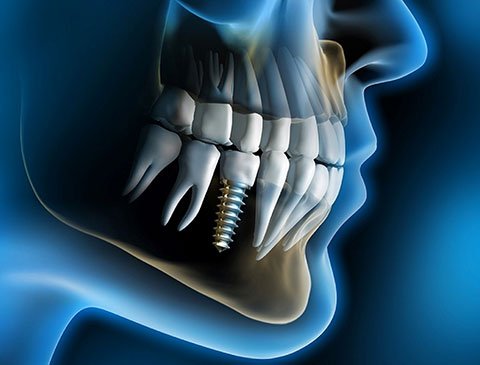
Dental Implants
Dental Implants are becoming an increasingly popular method for replacing missing teeth. If you compare natural teeth to implant-supported replacement teeth, you’ll see they have the same basic parts. Both have a crown (the visible part used to chew food). Both have a root that holds the tooth securely under the gum and is anchored into the jaw. The difference is that the implant is made of titanium used by surgeons for artificial joints. When you lose a tooth, you lose both the root and the crown. To replace the tooth, the surgeon first replaces the root with a small dental implant.


